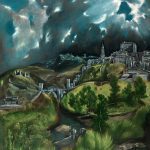
When one speaks of 19th-century Spanish painting, the name Raimundo de Madrazo y Garreta often comes up as a beacon of elegance and refined artistry. Born on July 24, 1841, in Rome, Raimundo belonged to an illustrious family of artists. His father, Federico de Madrazo, was a renowned painter, and his grandfather, José de Madrazo, had also left a significant mark on Spanish art. Growing up in such a milieu, it was almost inevitable that Raimundo would follow in their footsteps. But he didn’t just follow; he carved out a distinct path that highlighted his unique flair for capturing the genteel life of the European elite.
Early Life and Training
Raimundo’s early life was steeped in the arts. His father, Federico, was the director of the Prado Museum, providing Raimundo with unparalleled exposure to the masterpieces housed there. This environment, rich in artistic heritage and education, laid the foundation for his future endeavors.
At a young age, Raimundo began his formal art education under his father’s tutelage, absorbing the classical techniques and styles that had defined Spanish painting for centuries. He continued his studies at the Royal Academy of Fine Arts of San Fernando in Madrid, further honing his skills.
Paris: The City of Light and Opportunity
In the 1860s, like many artists of his time, Raimundo moved to Paris, the epicenter of the art world. Paris offered not just inspiration but also a vibrant market for art, which was crucial for any artist’s career. Raimundo quickly integrated into the artistic circles of the city, befriending other notable painters like Alfred Stevens and Paul Gavarni.

Paris was where Raimundo truly blossomed. He began to specialize in genre scenes and portraits, which were in high demand among the Parisian bourgeoisie. His works from this period are characterized by their exquisite attention to detail, luxurious settings, and the depiction of fashionable, upper-class subjects.
Style and Technique
Raimundo’s style is often described as a blend of realism and academicism, with a dash of impressionistic lightness. His paintings are meticulously detailed, showcasing his technical prowess. Yet, they also possess a certain softness, a romantic quality that captures the viewer’s imagination.
One of Raimundo’s trademarks was his ability to render textures with astonishing fidelity. Whether it was the sheen of silk, the softness of velvet, or the delicate lace, his attention to materiality set his works apart. This skill is evident in masterpieces such as “The Model Aline Masson with a White Mantilla,” where the play of light and shadow on different fabrics creates a lifelike presence.
Major Works and Themes
Raimundo’s portfolio is replete with portraits and genre scenes that offer a window into the refined lives of his subjects. His works often feature elegantly dressed women in opulent interiors, exuding a sense of grace and sophistication.
One of his most celebrated works, “Portrait of a Lady,” epitomizes his approach. The subject, dressed in a sumptuous gown, is portrayed with a delicate grace that highlights Raimundo’s ability to capture both physical beauty and inner poise. The background, rich with luxurious details, complements the subject without overwhelming her, showcasing his skill in composition.
Another notable work is “The Chocolate Cup,” which depicts a young woman enjoying a moment of leisure. The scene, intimate and serene, is a testament to Raimundo’s talent for capturing the subtleties of everyday life and elevating them to the level of fine art.
Later Years and Legacy
Raimundo’s career continued to flourish in the latter half of the 19th century. He exhibited regularly at the Paris Salon, where his works were met with critical acclaim. Despite the changing tides of the art world, with movements like Impressionism and Post-Impressionism coming to the fore, Raimundo remained true to his style, which continued to attract patrons.

In his later years, Raimundo spent considerable time in Venice, a city whose light and color deeply inspired him. His Venetian scenes, characterized by their vibrant palette and romantic ambiance, are some of his most evocative works.
Raimundo de Madrazo passed away on September 15, 1920, in Versailles, leaving behind a rich legacy. His works are housed in major museums around the world, including the Prado Museum in Madrid and the Metropolitan Museum of Art in New York. They continue to be celebrated for their technical excellence and their ability to capture the elegance of a bygone era.
A Family of Artists
Raimundo’s connection to his family’s artistic heritage is an integral part of his story. His father, Federico, and his grandfather, José, were both influential figures in Spanish art. Federico de Madrazo was a prominent portrait painter and a major influence on Raimundo’s development as an artist. This lineage is a testament to the family’s enduring impact on the world of art.
The Influence of Society and Fashion
Raimundo’s works are often a reflection of the society and fashion of his time. He had a keen eye for the latest trends and an ability to incorporate them into his paintings seamlessly. This aspect of his work makes his paintings not just art pieces but also historical documents that provide insight into the cultural and social milieu of 19th-century Europe.
Raimundo de Madrazo y Garreta’s art invites us into a world of beauty and refinement. His meticulous technique and his ability to capture the elegance of his subjects have cemented his place in the annals of art history. His paintings are not just visual delights but also narratives that tell the story of a society and an era defined by its grace and sophistication.

As we look at his works today, we are reminded of the timeless appeal of beauty and the enduring power of art to capture and preserve the essence of humanity. Raimundo de Madrazo y Garreta remains a beacon of artistic excellence, whose legacy continues to inspire and enchant art lovers around the world.




